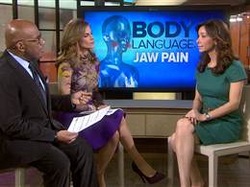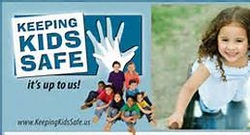Author:
|
Back to Blog
Sea Salt Vs. Table Salt11/13/2017 Sea salt has some health benefits – but won’t lower your sodium content one bit. Sea salt has boomed in popularity in restaurants and supermarket aisles across the country. Many gourmet chefs say they prefer it over table salt for its coarse, crunchy texture and stronger flavor. Manufacturers are using it in potato chips and other snacks because it’s “all natural,” and not processed like table salt. And some health-conscious consumers choose it because it contains minerals like magnesium.
Each of the above-mentioned characteristics may set sea salt apart from table salt, but in one other very important respect there’s absolutely no difference between the two: sodium content. Sea salt and sodium content Both sea salt and table salt contain about 40 percent sodium. Unfortunately, many consumers haven’t gotten that message. In an April 2011 survey by the American Heart Association, 61 percent of respondents said they believed sea salt is a low-sodium alternative to table salt. “It’s very important for people to be aware that sea salt has as much sodium as table salt,” said Rachel K. Johnson, Ph.D., R.D., an AHA spokeswoman and the Bickford Professor of Nutrition at the University of Vermont. “One of the keys to maintaining a heart-healthy diet is to control your sodium intake,” she said. “If you’re consuming more sea salt than you otherwise would because you think it has less sodium, then you may be placing yourself at higher risk of developing high blood pressure, which raises your risk of heart disease.” What’s the difference? Sea salt is obtained directly through the evaporation of seawater. It is usually not processed, or undergoes minimal processing, and therefore retains trace levels of minerals like magnesium, potassium, calcium and other nutrients. Table salt, on the other hand, is mined from salt deposits and then processed to give it a fine texture so it’s easier to mix and use in recipes. Processing strips table salt of any minerals it may have contained, and additives are also usually incorporated to prevent clumping or caking. While these attributes may make sea salt more attractive from a marketing standpoint, Johnson says there are no real health advantages of sea salt. “The minute amounts of trace minerals found in sea salt are easily obtained from other healthy foods,” Johnson said. “Sea salt also generally contains less iodine than table salt. Iodine has been added to table salt since the 1920s to prevent the iodine-deficiency disease goiter.” The next time you find yourself choosing between sea salt and table salt, remember that it’s probably mostly a matter of letting your tastebuds decide. But whichever option you choose, keep in mind that both contain the same amount of sodium, and remember that the American Heart Association recommends limiting sodium intake to no more than 1,500 milligrams a day.
0 Comments
Read More
Back to Blog
Could jaw pain indicate a heart attack?11/13/2017  Chewing ice? It could indicate an iron deficiency. Dr. Keri Peterson presents five surprising signs of serious illness, including jaw pains as a signal of a possible heart attack. click here to watch video
Back to Blog
Heart Failure Medications2/1/2016 Heart failure patients need multiple medications. Each one treats a different symptom or contributing factor. Each medication comes with its own instructions and rules. They can't do their job if you don't take them correctly. You and your caregivers should work with your healthcare team to understand the medications and how they should be taken; when, how often and in what amounts. It's important to discuss all of the drugs you take with your doctor and understand their desired effects and possible side effects. Remember that your healthcare provider and pharmacist are your best sources of information. Don't hesitate to ask them questions about your medicines.
The following chart gives you a quick "at-a-glance" look at many typical cardiac medications. Your prescription may have a different name from the ones listed on this chart. Brand names commonly available in the U.S. are shown in parentheses after the generic name for each drug. *Some of the major types of commonly prescribed cardiovascular medications are summarized in this section. For your information and reference, we have included generic names as well as major trade names to help you identify what you may be taking; however, the AHA is not recommending or endorsing any specific products. If your prescription medication isn't on this list, remember that your healthcare provider and pharmacist are your best sources of information. It's important to discuss all of the drugs you take with your doctor and understand their desired effects and possible side effects. Never stop taking a medication and never change your dose or frequency without first consulting your doctor. *Some cholesterol-lowering medications may interact with grapefruit, grapefruit juice, pomegranate and pomegranate juice. Please talk to your health care provider about any potential risks. Use these handy "At-A-Glance" charts to gain a quick understanding of these common cardiac medications you may be prescribed. If you need more help understanding what medication you're taking and why you're taking it, print this chart out and take it to your doctor. Cardiac Medications At-A-Glance Anticoagulants (Also known as Blood Thinners.) Commonly prescribed include:
Decreases the clotting (coagulating) ability of the blood. Sometimes called blood thinners, although they do not actually thin the blood. They do NOT dissolve existing blood clots. Used to treat certain blood vessel, heart and lung conditions. Reason for Medication
Back to Blog
Tips for Dealing With a Picky Eater1/23/2016 When you get home from a long day at work, the last thing you want to do is wage war over broccoli at the dinner table. That’s why it’s so easy to fall into the trap of making mac-n-cheese or ordering pizza. It keeps you out of an “eat your vegetables” fight. The good news is, getting a picky eater to eat a nutritious meal doesn’t have to be a battle. Here are some tips for dealing with a picky eater:
Back to Blog
The myth of symptoms There's a common misconception that people with high blood pressure, also called hypertension, will experience symptoms such as nervousness, sweating, difficulty sleeping or facial flushing. The truth is that HBP is largely a symptomless condition. If you ignore your blood pressure because you think symptoms will alert you to the problem, you are taking a dangerous chance with your life. Everybody needs to know their blood pressure numbers, and everyone needs to prevent high blood pressure from developing. The myth of symptomatic headaches The best evidence indicates that high blood pressure does not cause headaches except perhaps in the case of hypertensive crisis (systolic/top number higher than 180 OR diastolic/bottom number higher than 110). In the early 1900s, it was assumed that headaches were more common among people with high blood pressure. However, research into the subject doesn't support this view. According to one study, people with high blood pressure seem to have significantly fewer headaches than the general population. In a study published in the journal Neurology, people with higher systolic blood pressure (the top number in blood pressure readings) were up to 40 percent less likely to have headaches compared to those with healthier blood pressure readings. The researchers also looked at another measurement called the pulse pressure, which is the change in blood pressure when the heart contracts. Pulse pressure is calculated by subtracting the bottom number (diastolic reading) from the top number (systolic reading). Those with higher pulse pressure had up to 50 percent fewer headaches. The researchers think that the higher the pulse pressure, the stiffer the blood vessels. The stiffer the blood vessel, the less likely the nerve endings are working properly. If the nerve endings aren't functioning correctly, the less likely a person will feel pain. Therefore, headaches or the lack of headaches are not reliable indicators of your blood pressure. Instead, work with your doctor and know your numbers. The myth of symptomatic nosebleeds Except with hypertensive crisis, nosebleeds are not a reliable indicator for HBP. In one study, 17 percent of people treated for high blood pressure emergencies at the hospital had nosebleeds. However, 83 percent reported no such symptom. Although it's also been noted that some people in the early stages of high blood pressure may have more nosebleeds than usual, there are other possible explanations. If your nosebleeds are frequent (more than once a week) or if they are heavy or hard to stop, you should talk to your healthcare professional. Keep in mind that nosebleeds can be caused by a variety of factors, with the most common one being dry air. The lining of the nose contains many tiny blood vessels that can bleed easily. In a hot climate like the desert Southwest or with heated indoor air, the nasal membranes can dry out and make the nose more susceptible to bleeding. Other causes include vigorously blowing your nose; medical conditions like allergies, colds, sinusitis or a deviated septum; and side effects from some anticoagulant drugs like warfarin (Coumadin®) or aspirin. Other inconclusively related symptoms You should not try to evaluate your symptoms in an attempt to self-diagnose high blood pressure. Diagnosis should only be made by a healthcare professional. A variety of symptoms may be indirectly related to HBP but are not always caused by HBP, such as:
Back to Blog
First Aid Tips You Must Know1/12/2016 In case of these emergencies, be ready to act, but act appropriately! There have been a few changes in some of the basics of medical care, here are a few updates:
Give us a call to take a class (503)538-2610 Seizures: DO NOT HOLD THE VICTIM DOWN, OR HOLD STILL! Only move objects out of harm's way, and cushion their head. DO NOT PLACE ANYTHING IN THEIR MOUTH! This was shown to cause more harm to the victim. In case of a seizure, allow the victim to space to move and stay by their side. Call 911 if they are not prone to seizures, if this is a rare occurance, or the victim had been sick. Nose Bleeds: DO NOT LEAN THE HEAD BACK! We are to lean our head slightly forward, allowing the blod to clot and to slow the blod flow faster. Bleeding: DO NOT USE TOURNIQUETS! These are almost a thing of the past, unles you are an hour or more from the hospital. Use pressure points (the same as pulse points) to slow the blood flow, and elevate the wound above the heart will also slow it down. Burns: DO NOT USE VASELINE OR BUTTER! These home remedies make things worse. Use cool water over a burn, until the pain subsides. Allow the burn to "sweat" by allowing air to escape from the skin. Don't cover the wound so tight that it can not breathe, only protect it from further damage.
Back to Blog
50 Years of CPR11/25/2015 50 Years of CPR Over the past fifty years, cardiopulmonary resuscitation, or CPR, has become a household term. In fact, it's become a term commonly heard and a concept taught in schools, community centers, houses of worship and places of business daily around the country. For many people, it's hard to remember or imagine a time before CPR.
I think about what a huge advancement CPR has been and wonder what life-saving emergency procedures were like before it. Then I thought about other discoveries that also occurred over the past 50 years. CPR is in good company with the pacemaker, in-vitro fertilization, MRI's, GPS, DNA fingerprinting, jet liners, smoke detectors and cell phones. It's incredible to think about what life was life before any of these. Just recently, the American Heart Association had released new guidelines. I am happy to include these guidelines as a regiment in my training. There are big advancements to the new procedures that make both learning and training simpler than before. There are also more ways to participate in classes, from kits, online CPR video instruction, phone applications and classes. Since the documentary, I became so inspired by all of the heartfelt stories, that I made it a life priority to train 5000 people over the next year as my personal crusade. This I felt to be a most fitting way to honor both the survivors and rescuers. Please join my cause by contacting Heart Savers and Educators, Inc., and ensure that your workplace has the proper CPR and First-Aid training. Yes, it's true, in 50 years so much has changed. But we still know that the most important thing in our lives is a beating heart. Rick Schmitt 503-538-2610 www.cprnorthwest.com
Back to Blog
Keeping Halloween Safe10/25/2015  Halloween is almost upon us, and if you have children, that means time for trick-or-treating. While trick-or-treating is an inherently safe activity, here are five easy extra steps you can take to ensure everyone has a great time, and that you don’t spend the evening worrying. Safety in numbers. If you’re going trick-or-treating along with your child then this doesn’t apply, but older kids want to roam the neighborhood with their friends. Make sure your child will be in a group that will travel together, and that these are children that both you and your child know and trust. Know where your child is going. Find out the route your child wants to take trick-or-treating, so you can foresee any problems that might arise. Establish clear neighborhood boundaries so that your child doesn’t get swept up in the excitement and end up too far from home. Use extra caution with streets. Children aren’t the only ones who celebrate Halloween. Plenty of adults do, too, and unfortunately some of them take the wheel when they should be taking a cab. Have a talk with your child about using extra care when crossing streets, and tell them not to assume anything with approaching cars. Use a light, if needed. If your child’s costume is very dark (or even if it isn’t) you can add some extra visibility by clipping a bike light on the back of it. If your child doesn’t like this idea, you can compromise that they have to use the light when nearing a street. Stay in contact. If you are your child’s contact should they need anything, then make sure to keep your phone with you. If you are going out and they are under someone else’s care, make sure that person is within easy reach. This way if plans change for your child, or they have a question, you can help them out. All too often children make unwise or unsafe choices because they couldn’t reach an adult. Above all make sure to have fun!
Back to Blog
The Evolution of CPR10/2/2015 Many of our customers have taken CPR courses before, and they often wonder why they are required to re-certify every two years. One reason being that the majority of us simply do not use the skill that often, and it is easy to forget the exact protocol. It never hurts to have a refresher. But, the main reason is that the American Heart Association along with other groups are routinely analyzing CPR data and survey results. Often, this leads to slight changes in technique in an attempt to make the use of CPR more effective.
If you have taken an AHA CPR course before, then the main change you will notice is in the sequence. Before, you probably leaned that the correct sequence was ABC (A: open the airway, B: give breaths, and C: compressions). However, now the sequence has been changed to CAB. The reason behind this is due the fact that research has concluded compressions are the most effective when given as early as possible. Additional research indicates that compressions alone may be the most effective mechanism in CPR. Often, in the “layman” CPR classes, we stress the benefits of hands-only CPR. Even if you think you know it perfectly, it’s easy to lose yourself in an emergency situation. If you forget the exact ratio, or are not immediately comfortable with mouth-to-mouth, then it’s best to go ahead put your hands in the middle of the chest, and “start pumping hard and fast.” This way, by jumping in with compressions, you are automatically having a positive effect on the victim’s survival chances. Far too often, people who know CPR freeze and panic. This change in the sequence is not only more effective, but it is an effort to get people to respond, and for them to realize that their actions can only help. Attempting to do something is always better than regretting that you stood by and did nothing. If you would like to take a CPR class give us a call at (503) 538-2610
Back to Blog
 Most people know to guard electrical outlets and lock up cabinets with chemicals inside, but there might be some extra steps you’ve overlooked. Here are a few common hazards for children found in most homes.
|

 RSS Feed
RSS Feed